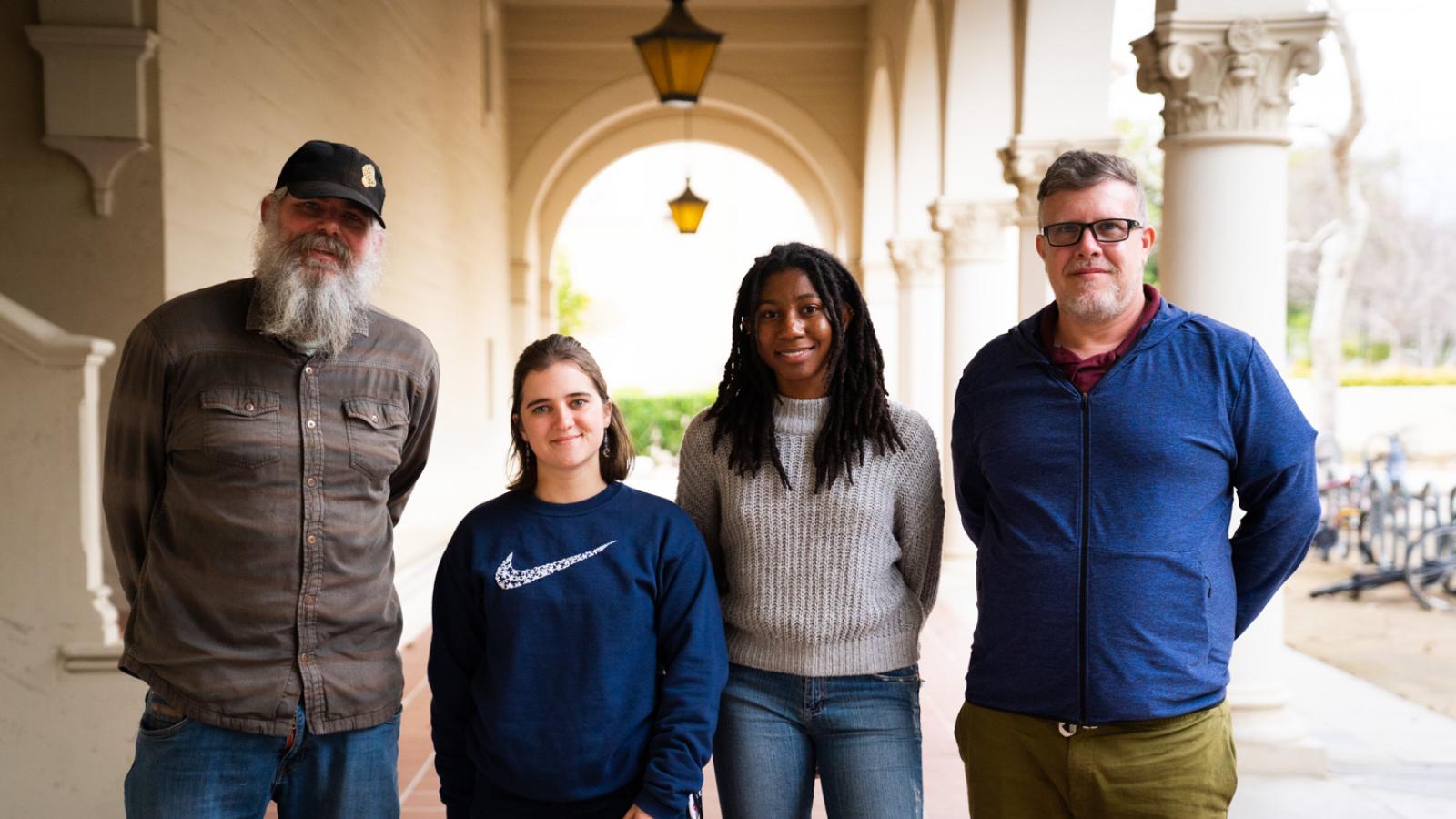Wallace Meyer, associate professor of biology, has been studying Hawaiian land snails since his days as a Ph.D. student, with most of his research documenting their decline. They are among the most threatened animals on the planet, and more than 60 percent of them are already extinct.
Now, a $1.6 million award from the National Science Foundation and the Paul G. Allen Family Foundation will allow Meyer and his collaborators to identify solutions to keep species of these snails alive.
Meyer and co-principal investigator Andre Cavalcanti, professor of biology, will partner with colleagues at the Bernice Pauahi Bishop Museum; University of Hawaii, Manoa; and Hawaii Department of Land and Natural Resources, Division of Forestry and Wildlife.
“We’re on the precipice of potentially doing something super valuable for these snails,” says Meyer. “I think we’ll have strong recommendations and some really strong hypotheses.”
The project will examine the microbial food resources found on plants on which land snails live. The aim is to fill in major knowledge gaps regarding land snail feeding ecology and then to provide recommendations for how to restore areas to provide critical habitats for the species.
What do snails actually eat?
“We do not actually know what they eat,” says Cavalcanti. “How do you save a species when you don’t even know what they eat?” adds Meyer.
Along with four students—two from Pomona and two from universities in Hawaii—Meyer and Cavalcanti will seek to identify which plant species snails prefer and then what microbes they eat.
“Most of the time when we think about snails and slugs, we think of them eating plants in our garden. But most snails don’t eat plants. They eat microbes that live on the surface of the plants,” says Meyer.
The technology to do this kind of study has only been available for about 20-25 years, says Cavalcanti. Prior to that, researchers were only able to study the few bacteria or fungi that can grow in labs, so they could only observe a small subset of the microbes present. Now, they can take a swab of a leaf and sequence the DNA, which then allows them to grow and characterize the microbiome, that is, all the microbes that lives on the surface of the leaf.
Over the next three summers, Meyer and student researchers will travel to remote mountaintop locations in Hawaii, often by helicopter, to collect data. They will also spend time in lab settings each week to analyze their findings.
Training student researchers
Sy’Vanna Bartlett ’24, a biology major, and Nelia Perry ’24, a molecular biology major, have been selected for the inaugural trip this summer.
“I am beyond excited to have the opportunity to conduct research at the intersection of molecular biology and ecology,” says Perry. “This opportunity also taps into my love of the outdoors and adventure; as a group we will be challenged intellectually and physically.” Bartlett adds, “What excites me the most about this project is that we will be working out in the field. This is an opportunity to expand my knowledge of fieldwork research and contribute towards conservation actions for endangered species.”
After their summer in Hawaii, Bartlett and Perry will continue lab work with Meyer and Cavalcanti during the academic year. Their work on campus will involve processing data through bioinformatics and statistical analyses and producing visual aids, manuscripts and talks to share the research.
Meyer is enthusiastic for students to learn basic ecology techniques as well as to dive into microbial work. “Conservation really is about applying as many different techniques as you need,” he says. “You’re doing whatever it takes to actually answer the question that’s critical to preserve species.”
Conserving Hawaiian culture
Meyer also looks forward to introducing the students to the cultural importance of the snails. There are hula dances based on the snails and their environments, and the Hawaiian queen would wear necklaces comprised of snails from different valleys she visited, he says.
“They call them jewels of the forest because these things are really beautiful,” Meyer says. “The shells are coveted. They’re not your common garden snail.”
In February, Meyer was invited to the Hawaiian governor’s proclamation of 2023 as the “Year of the Kāhuli (snail)” because of his research contributions to protecting snail diversity in Hawaii.
He emphasizes that the work he is doing is just one piece of the puzzle. “There’s a huge group of people that are interested in saving these snails,” says Meyer. “There are people that come at it from the perspective of the organisms itself. There are Native Hawaiians that come at it from a cultural perspective. There’s collaboration from different groups and also recognition from the government.”
Ultimately, Meyer says, the work is “not just about conserving biodiversity but conserving Hawaiian culture.”
In addition to funding from the National Science Foundation and the Paul G. Allen Family Foundation, this summer’s project is also supported by the Chan/Godsey Fellowship.
